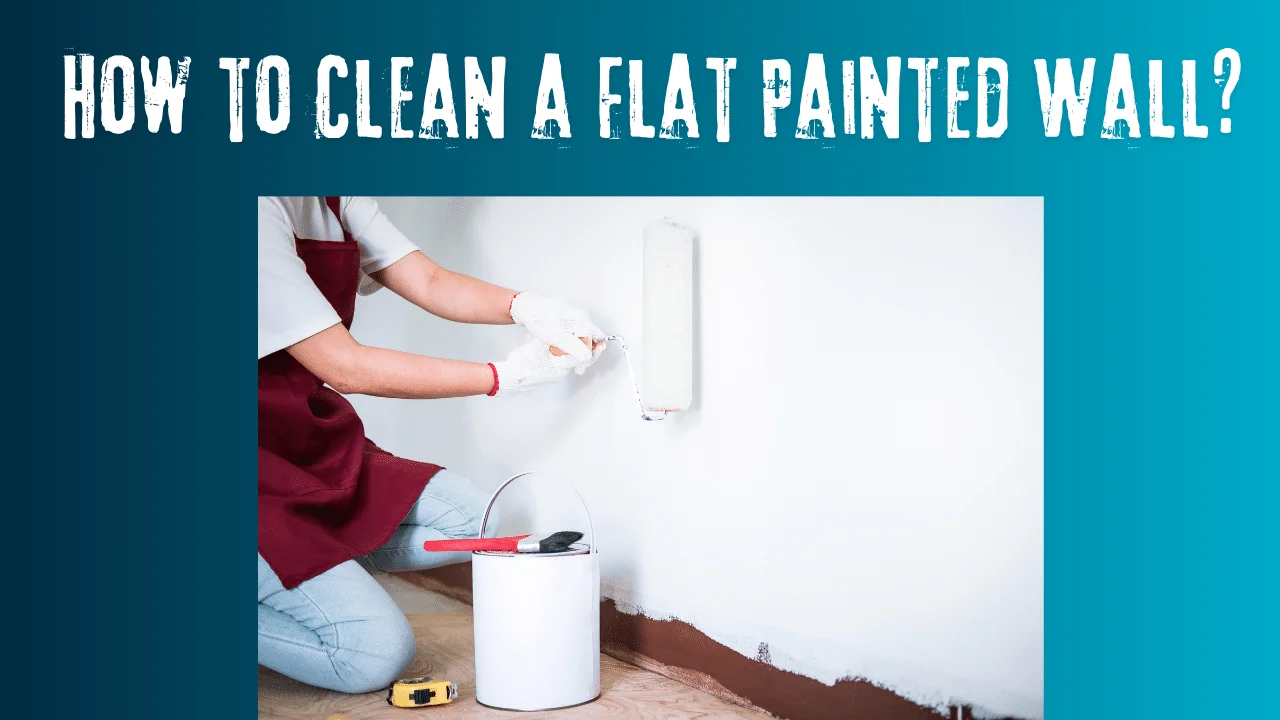In order to keep a home looking nice and make sure that painted walls last a long time, cleaning them is a must. Flat paint, in contrast to glossier varieties, absorbs light and conceals flaws effectively; however, it can be more difficult to clean without harming the surface. Following the steps in this article will keep your flat-painted walls looking great for as long as possible without damaging the paint.
Understanding Flat Painted Walls
Because it does not reflect light, flat paint is great for hiding surface imperfections. If you’re going for a matte look in your ceiling, living room, or bedroom, this is a great option. Having said that, it is more difficult to clean and more prone to stains than glossy paints due to the paint’s increased porosity. In order to maintain clean and fresh environments, it is essential for homeowners, renters, and maintenance staff to know how to clean flat painted walls.
Preparing to Clean Your Walls
Choose the Right Cleaning Tools
The initial stage in efficiently cleaning flat painted walls is to choose the right tools. Dust the surface gently using a gentle brush or a microfiber cloth. The paint will not be scratched by these tools, and they will effectively collect dust.
Mixing a Gentle Cleaning Solution
Use a gentle dish soap and warm water mixture for most of your regular cleaning needs. You should stay away from abrasive cleaners and strong chemicals because they can harm the paint. To make sure the solution is mild enough to protect the paint, mix in only a tiny bit of soap.
Testing the Cleaning Solution
Always do a spot test on an inconspicuous part of the wall before cleaning the whole thing. This will keep the wall’s aesthetic value intact by preventing the cleaning solution from discolouring or damaging the paint.
The Importance of Dusting Before Washing
To keep the dust and debris from becoming mud when you start wet cleaning, dust the walls first. Doing this will ensure that the cleaning process does not smudge the surface any further.
Effective Cleaning Techniques
Washing Walls in Sections
Washing walls in manageable sections will help you avoid streaks and get a thorough cleaning. Gently work the wet sponge or cloth, dipped in soapy water, from top to bottom. This method is useful for controlling drip lines and preventing any one area from becoming too wet.
Rinsing Off Cleaning Residue
Rinsing the walls with clean water after washing is essential for removing soap residue. When the soap dries, it may leave visible stains on the wall because it attracts dirt.
Drying the Walls Properly
To remove any remaining moisture, gently dry the walls using a soft, dry cloth or towel. This is a crucial step in keeping the flat paint’s matte finish and avoiding watermarks.
Preserving the Flatness of Your Painted Walls
Regular Dusting Schedule
The accumulation of dirt and grime can be avoided by keeping to a regular dusting routine. With this easy maintenance schedule, you won’t have to scrub the walls as often, and they’ll stay cleaner for longer.
Spot Cleaning Techniques
You can use a moist sponge and gentle soap to spot clean small stains or scuffs here and there. Do not wait for spills or stains to set in before addressing them; otherwise, they will become increasingly difficult to remove.
Avoiding Harsh Chemicals
Don’t use bleach or any other harsh chemicals on the paint; they might remove it or change its colour. If your paint is flat, you should only use mild, water-based cleaners.
Preventive Measures for Wall Care
Protect walls in high-traffic areas from scratches and scuffs by strategically placing mats, runners, or furniture. You can extend the life of your walls even further by teaching your family members proper maintenance techniques for painted surfaces.
Advanced Cleaning Techniques for Stubborn Stains
Using Magic Erasers Carefully
Scuffs and crayon marks, which are more difficult to remove from flat painted walls, can be effectively removed with the help of a magic rubber. Be careful when using them, though, because their abrasiveness can sometimes strip paint off stains as well. It is recommended to start with a small, hidden area and apply light pressure when testing.
Employing Baking Soda for Natural Cleaning
When you need to gently scrub away tough stains without resorting to harsh chemicals, baking soda is your best bet. Mix some water into a paste, then apply it to the stain. Use a soft cloth to gently rub it in. Greasy stains or fingerprints are the perfect candidates for this technique.
Vinegar Solutions for Odor and Stain Removal
If you want to clean the walls and remove odours without leaving behind harsh chemicals, try using distilled white vinegar. An all-natural cleaning solution can be made by mixing equal parts water and vinegar. If you live in a damp area, like a kitchen or bathroom, this may be a lifesaver.
Handling Ink and Marker Stains
It might be difficult, but not impossible, to remove ink and permanent markers. These pigments can be effectively broken down by rubbing alcohol. Be careful not to spread the ink further as you dab a small amount onto a cotton ball and delicately apply it to the stain.
Eco-Friendly Cleaning Options
Choosing Eco-Friendly Products
Instead of using harsh chemicals that are bad for the environment and your walls, go for eco-friendly alternatives. If you have children or pets in your home, these cleaners are a good option because they don’t contain volatile organic compounds (VOCs).
DIY Cleaning Mixtures
Reduce chemical use and plastic waste from commercial cleaning products by making your own cleaning solutions with common household items like baking soda, lemon juice, and vinegar.
Sustainable Cleaning Tools
Instead of using single-use wipes, think about switching to reusable cloths and biodegradable sponges. This keeps you from polluting the environment with microplastics while simultaneously cutting down on waste.
Regular Maintenance for Longevity
Using these eco-friendly methods for wall maintenance and cleaning on a regular basis will lessen your environmental impact over time by extending the life of your paint and reducing the frequency of repainting.
FAQs
Can you use vinegar to clean flat painted walls?
Yes, a solution of one part vinegar to three parts water is effective for cleaning and deodorizing flat painted walls without causing damage.
How often should flat painted walls be cleaned?
It’s recommended to dust monthly and wash walls every 3 to 6 months, or as needed when stains or marks appear.
Do magic erasers work on flat painted walls?
Yes, but they should be used with caution as they can sometimes remove paint along with stains. Always test on a small area first.
Is it safe to use bleach on flat painted walls?
Bleach should generally be avoided as it can discolor and damage flat paint. Opt for gentler cleaning solutions instead.
How to clean scuff marks on flat paint?
Gentle rubbing with a damp sponge dipped in baking soda or a diluted dish soap solution can effectively remove scuff marks from flat painted walls.
Also Read: How to Clean Floor Tile Grout Without Scrubbing?
Conclusion
Keeping flat-painted walls clean doesn’t have to be a chore. You can keep your walls looking great and feeling refreshed without damaging them if you know what you’re doing and use the correct cleaning products and methods. Careful cleaning can maintain your home’s pristine appearance, regardless of whether you’re tackling common dirt or more difficult stains. Keep in mind that flat painted surfaces can be maintained with gentle cleaning practices and regular maintenance to keep your living spaces looking vibrant and inviting for longer.

Shannon Reyes is a seasoned writer with a knack for crafting engaging blogs on a variety of service industries, including plumbing, cleansing, moving, pest control, and roofing. With a keen eye for detail and a passion for helping readers navigate complex topics, Shannon brings her expertise to life through informative and accessible content.











